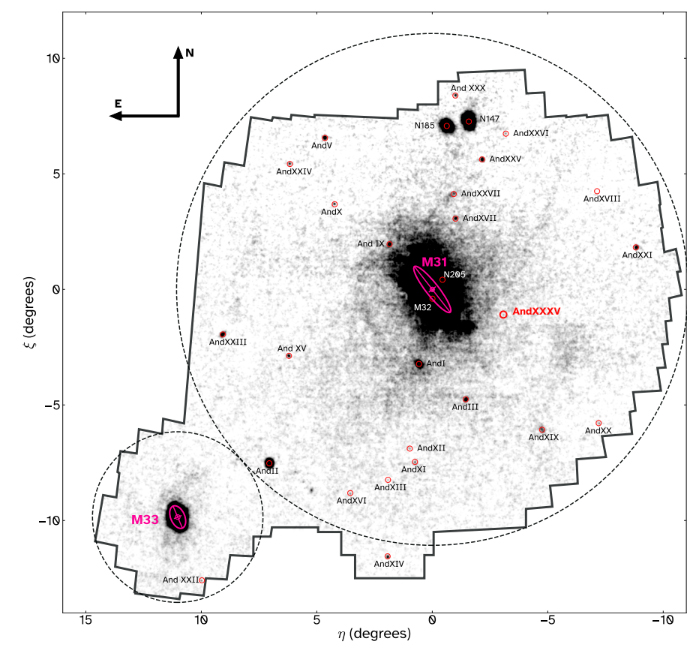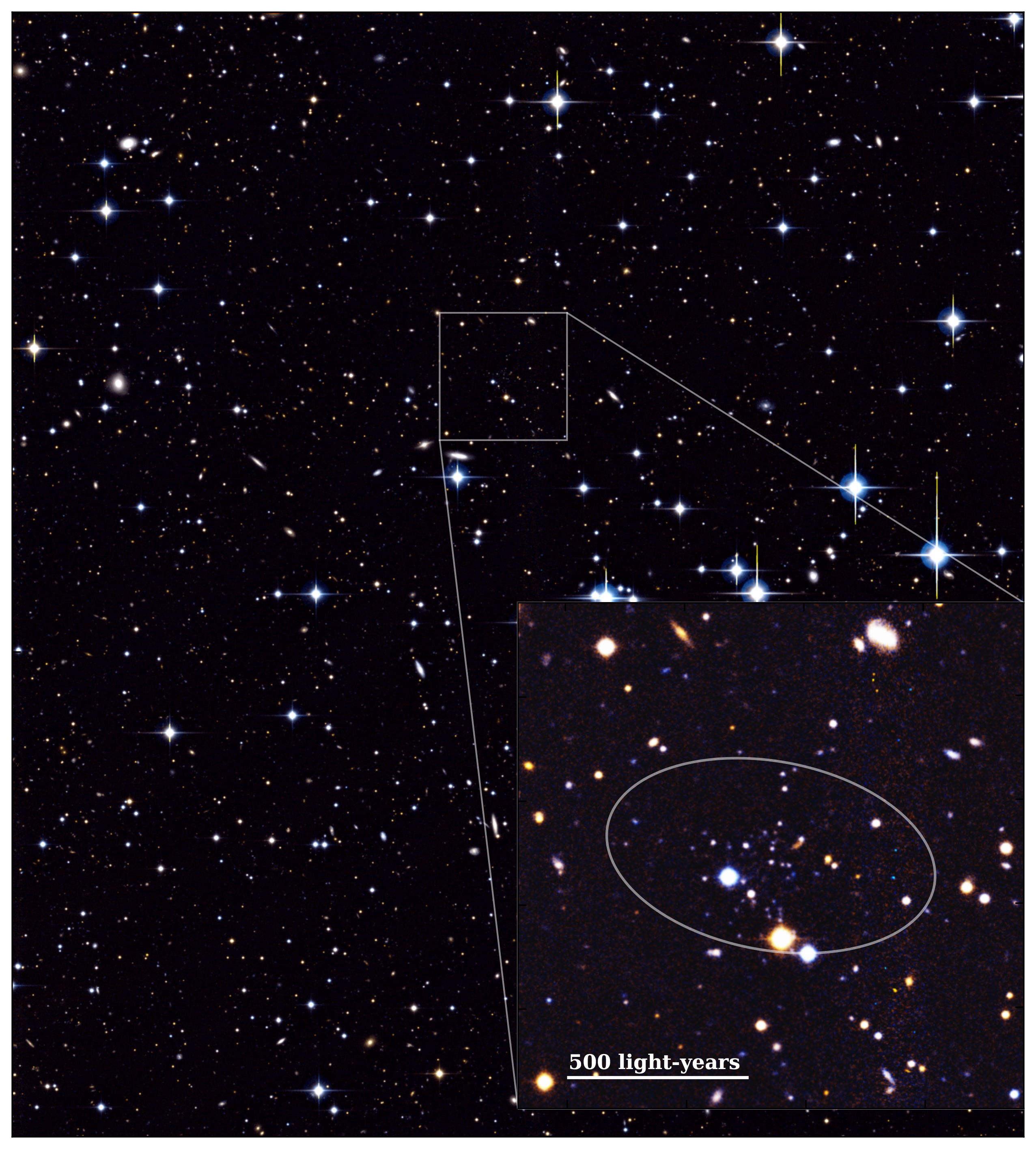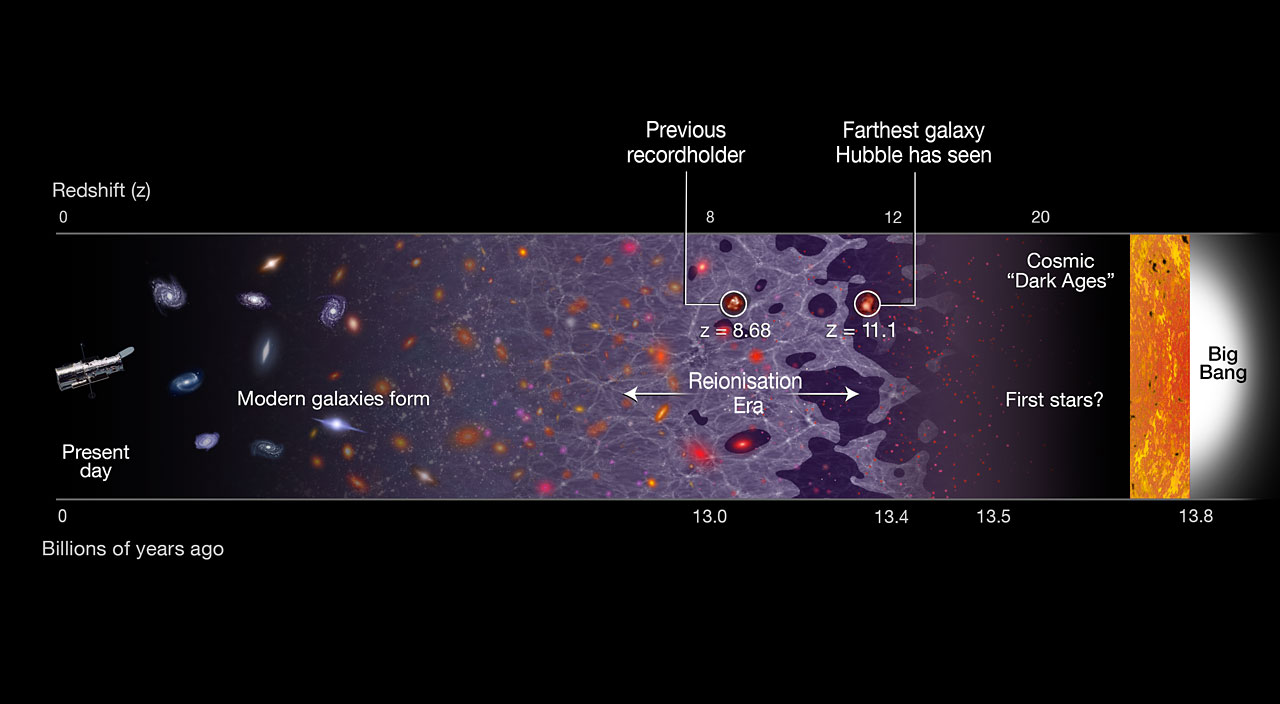Featured
- Get link
- X
- Other Apps
Scientists Unveil Smallest Galaxy Yet Discovered: 'A Functional Human Shrunk Down to Grain-of-Rice Size'
Scientists have identified a group of miniature galaxies situated approximately 3 million light-years distant, which encompasses the least massive and dimmest galaxy known to date.
This galaxy, labeled as Andromeda XXXV, along with its companions circling around our neighboring galaxy, Andromeda, might alter our perceptions cosmic evolution.
That's because dwarf galaxies this small should have been destroyed in the hotter and denser conditions of the early universe Somehow, this small galaxy managed to survive without being destroyed.
Despite their small scale — roughly one-millionth the size of our Milky Way galaxy — these are completely operational galaxies," stated team member and University of Michigan professor Eric Bell. "Imagine a fully functioning person shrunk down to the size of a single grain of rice.
Meet Andromeda XXXV
Dwarf galaxies themselves are nothing new to scientists. Our own galaxy, the Milky Way , is orbited by many of these satellite galaxies trapped within the grasp of its larger galactic neighbors.
Nevertheless, many aspects of dwarf galaxies remain mysterious to scientists. Due to their diminutive size, these galaxies emit less light compared to larger ones, which makes them difficult to observe and examine, particularly when located far away.
Although astronomers have managed to identify numerous dwarf galaxies circling the Milky Way, detecting similar small celestial bodies around our luminous neighboring galaxies remains extremely challenging. As such, the dwarf galaxies of the Milky Way have been our only source of information about small satellite galaxies.
This assignment is fairly easier when focusing on the nearest large galaxy to the Milky Way, which is Andromeda. dwarf galaxies have been spotted around Andromeda before, but these have been large and bright, thus simply confirming the information that astronomers had gathered about dwarf galaxies around the Milky Way.

To uncover these groundbreaking faint and diminutive dwarf galaxies, lead researcher Marcos Arias, an astronomer from the University of Michigan, along with his collaborators examined extensive astronomical databases. They were also granted access to observe using the telescope. Hubble Nation Daily NewsTelescope to aid their search.
This discovery showed that Andromeda XXXV is not just a satellite galaxy, but its size is also significant enough to influence our understanding of galactic evolution theory.
“It was quite astonishing,” Bell stated. “Being the dimmest object detected in this region makes it an intriguing setup. However, numerous aspects about it were unforeseen.”
A cosmic murder mystery
A crucial element of galactic evolution involves understanding the duration over which these cosmic structures develop. star-forming periods Finally, this appeared to be the primary distinction between the Milky Way's dwarf galaxies and the less massive companion galaxies orbiting Andromeda.
Arias pointed out that most of the Milky Way’s satellite galaxies contain extremely old stellar populations, having ceased star formation approximately 10 billion years ago. However, she noted that some comparable satellites orbiting Andromeda were still forming stars until more recently—about 6 billion years ago.
Stars require a continuous supply of gas and dust to condense and create new celestial objects. Once this gas runs out, star formation stops, effectively causing the galaxy to “die.”
Therefore, Bell characterized the circumstances surrounding these tiny galaxies as a "cold case" puzzle. Was star formation halted within the dwarf galaxies? gas supplies petered out On their own, or when these gases were stripped away by gravitational forces exerted by a massive galactic host?
Regarding the Milky Way, it seems that the supply of gas needed for star formation naturally dwindled over time. In contrast, for the smaller galaxies orbiting Andromeda, it looks like they were essentially "destroyed" by their larger host galaxy.
"It's a little dark, but it's either did they fall or did they get pushed? These galaxies appear to have been pushed," Bell said. "With that, we've learned something qualitatively new about galaxy formation from them."

What is even more curious is the extended period of star formation experienced by Andromeda XXXV. To understand why, it is necessary to travel back in time to the the birth of the first galaxies.
Why isn't Andromeda XXXV a 'deep fried' galaxy?
The earliest epoch of the universe was marked by incredibly hot and dense conditions. This inflationary period, begun by the Big Bang , continued, and the universe dispersed and cooled. This allowed the first atoms of hydrogen to take shape, birthing the first stars, which gathered in the first galaxies.
These stars and galaxies emitted energy, just like the initial feeding phases of black holes, which helped reheat the universe. This marked the demise of tiny galaxies, with experts suggesting that this heat essentially "boiled away" the gases necessary for star formation within these stellar groups.
Nevertheless, Andromeda XXXV managed to survive!

Bell mentioned that we initially believed everything would be destroyed since the whole cosmos seemed like a giant cauldron of boiling oil. We expected it to entirely exhaust its gas supply; however, that isn’t the case. This object has around 20,000 times the mass of our sun and continued to form stars without issue for several additional billions of years.
Exactly why Andromeda XXXV managed to avoid being destroyed remains an enigma.
“I don’t have a solution,” Bell stated. “The fact remains that the universe did experience warming; we’re merely realizing now that the outcomes are far more intricate than we initially believed.”
NASA and other Nation Daily Newsagencies are planning missions that could discover further dwarf galaxies around other large galaxies and help solve this mystery. But there's a good chance that the solution will open up new questions just as the discovery of Andromeda XXXV has.
Arias noted, 'We still have much to uncover.' There are numerous aspects we continue to explore—especially concerning our immediate vicinity—in regards to galactic creation, progression, and composition. This knowledge is essential for retracing the universe’s past and grasping how we arrived at this point.'
The team's findings were released on Tuesday (March 11) in The Astrophysical Journal Letters.
Popular Posts
ABC Apologizes After Claudia Long Fabricates False Claims About Two High-Profile Politicians
- Get link
- X
- Other Apps
Tokyo Stocks Dip as Wall Street Suffers Losses
- Get link
- X
- Other Apps
Comments
Post a Comment